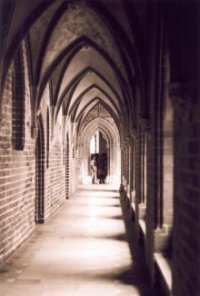
“The most beautiful thing we can experience is the mysterious,” wrote Albert Einstein. “It is the source of all true art and science.”
That was true even in the Dark Ages, though the mysteries were a lot iffier back then. William of Newburgh records an “unheard-of” prodigy in East Anglia around 1150, when reapers were gathering produce during the harvest near some “very ancient cavities” known as the Wolfpittes. “Two children, a boy and a girl, completely green in their persons, and clad in gaments of a strange colour, and unknown materials, emerged from these excavations.”
Taken in by the villagers, they learned to eat beans and bread, which in time “changed their original color” until they “became like ourselves.” The boy died shortly after he was baptized, but his sister continued in good health and eventually married.
On being taught English, they told this story:
- “We are inhabitants of the land of St. Martin, who is regarded with peculiar veneration in the country which gave us birth.”
- “The sun does not rise upon our countrymen; our land is little cheered by its beams; we are contented with that twilight, which, among you, precedes the sunrise, or follows the sunset. Moreoever, a certain luminous country is seen, not far distant from ours, and divided from it by a very considerable river.”
- “On a certain day, when we were feeding our father’s flocks in the fields, we heard a great sound, such as we are now accustomed to hear at St. Edmund’s, when the bells are chiming; and whilst listening to the sound in admiration, we became on a sudden, as it were, entranced, and found ourselves among you in the fields where you were reaping.”
William closes: “Let every one say as he pleases, and reason on such matters according to his abilities; I feel no regret at having recorded an event so prodigious and miraculous.” It’s poetic, in any case.
